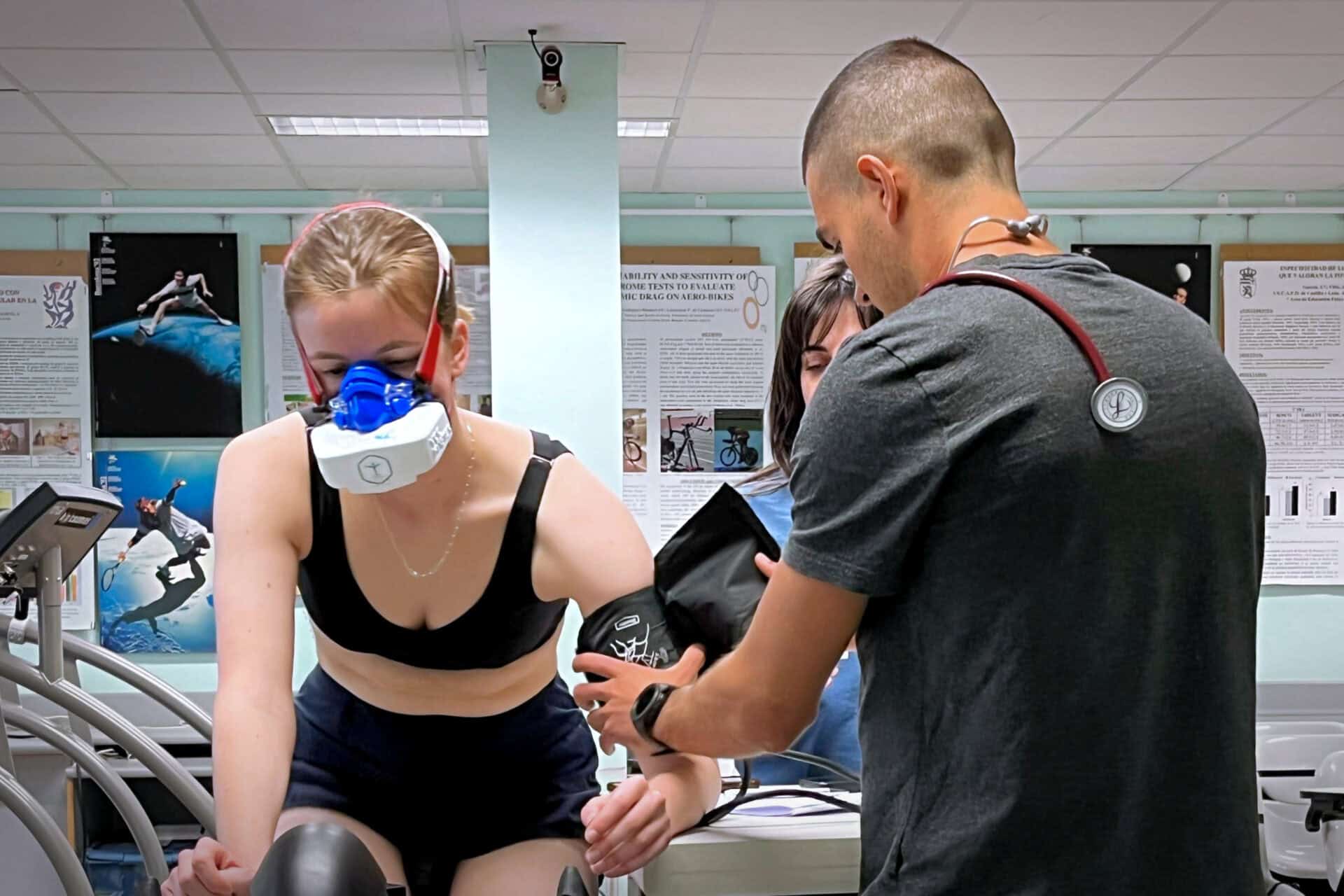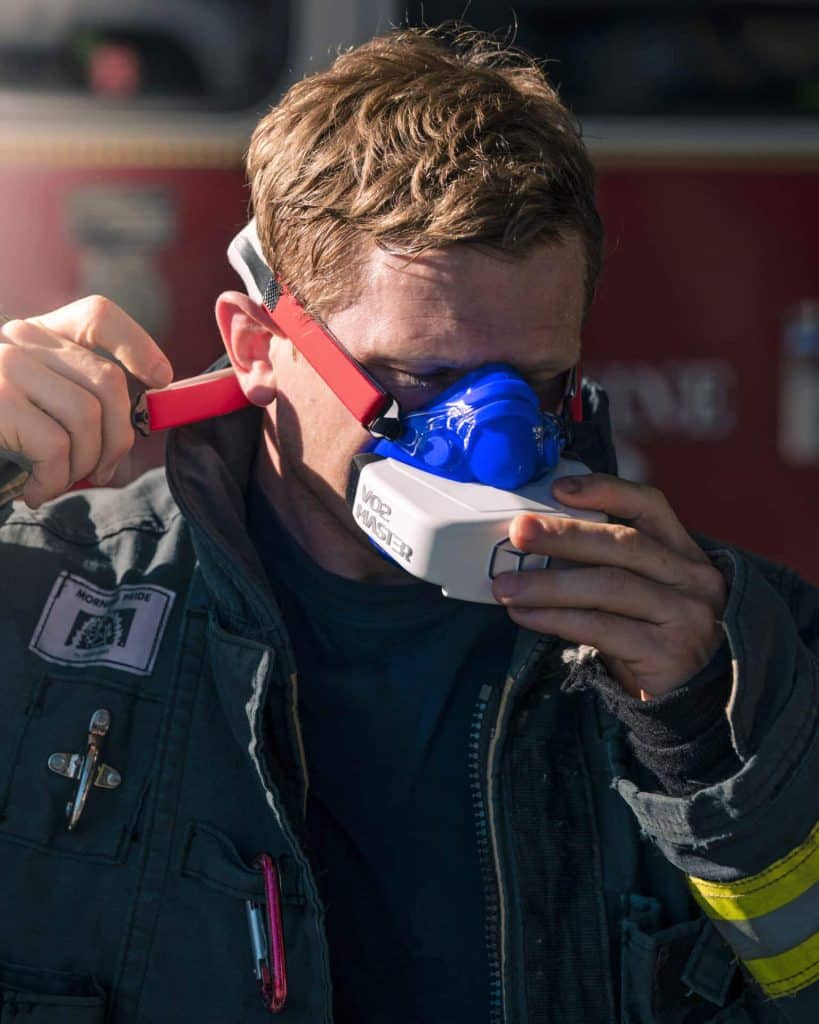What VO2 Master Metrics Revealed in University of León Sprint Interval Cycling Research
Explore how the VO2 Master analyzer helped reveal torque-driven metrics in sprint cycling performance at the University of León.

What if just one variable—torque—could shape the physiological and perceptual profile of a sprint interval workout? That’s what researchers at the University of León set out to discover. In a groundbreaking study recently published in the European Journal of Applied Physiology, scientists investigated how different torque settings during short sprint interval training (sSIT) affect athletic performance and perception.
The research relied on the VO2 Master Analyzer to collect precise, real-time data on oxygen consumption (VO2) during high torque and low torque conditions. Here’s what the study revealed—and why it matters.
Key Point 1: VO2 Master Enabled Deep Insights into Neuromuscular Response
Using VO2 Master technology alongside surface electromyography (sEMG), the research team measured the neuromuscular response to high torque (HT) vs. low torque (LT) cycling efforts. They discovered that HT generated greater mean power (MP) and rate of fatigue (RF), while LT allowed for higher mean cadence and sEMG amplitude—indicating more sustained motor unit recruitment.
Takeaway: VO2 Master helped quantify how torque directly shapes power output and muscle activation, offering actionable insights for training personalization.
Key Point 2: Cardiometabolic Load Remained Constant Across Torque Settings
Despite stark differences in mechanical and neuromuscular profiles, both HT and LT protocols produced similar cardiometabolic results. VO2 Master tracked no significant differences in oxygen consumption (VO2), heart rate (HR), or muscle oxygenation (SmO₂) between torque settings.
Takeaway: Researchers confirmed that torque can be modified to shift neuromuscular demands without affecting cardiovascular strain—ideal for tailoring workouts across different populations.
Key Point 3: Perception Matters—And Torque Affects It
Perceptual responses, including rating of perceived exertion (RPE) and affective valence (how the session feels emotionally), varied significantly. VO2 Master supported measurement coordination during these sessions, which showed that HT workouts were perceived as tougher and less enjoyable. LT sprints, by contrast, felt better to participants.
Takeaway: When designing protocols for long-term adherence—particularly in clinical or recreational contexts—lower torque may yield a more enjoyable and sustainable experience.
Key Point 4: Sprint Kinetics and Fatigue Profiles Diverge with Torque
Data captured during the study showed that HT sprints led to earlier time to peak power (TPP) and sharper performance declines, whereas LT required longer to reach peak power but maintained output more consistently.
Takeaway: VO2 Master data supported clear distinctions in fatigue behavior, which can guide whether a training block should emphasize explosiveness (HT) or endurance and pacing (LT).
Key Point 5: Portable Metabolic Analysis Proves Invaluable for Field and Lab
The researchers used VO2 Master’s wearable analyzer to collect VO2 metrics throughout the sessions. Its portability enabled seamless testing with wireless real-time, high-intensity intervals and instant reporting.
Takeaway: The VO2 Master Analyzer supported detailed and repeatable assessments in dynamic training settings and demonstrated its value for both scientific and practical domains.
Conclusion
Researchers at the University of León have provided new insights into how torque shapes fatigue, power, and perception—without changing the cardiometabolic load.
“This study provides valuable information with a comprehensive overview on physiological and perceptual responses to sSIT under different torque conditions. Pedaling resistance can significantly influence both neuromuscular and perceptual responses but not cardiometabolic demands during sSIT protocols. Thus, MP, RF, and RPE were higher in HT, while TPP, MC, and sEMG amplitude were higher in LT. Therefore, torque selection should be further considered when designing sSIT protocols, as differences in pedaling resistance can lead to variations in mechanical power, muscle recruitment, and perceptual responses.
In practical terms, we may emphasize the potential of torque adjustments as a prescription parameter for dissociating neuromuscular responses from cardiometabolic loading, which could inform the design of interventions targeting specific psycho-physiological responses. Thus, it would be suggested the use of higher torques during sSIT protocols in athletes aiming to develop resistance to fatigue, while using lower torques in clinical populations would be recommended because of the more positive perceptual responses which favor adherence to exercise.”
José Riesco‐Villar1 · Aarón Escribano‐Pascual1 · Alejandro González‐Fernández1 · Héctor Pascual‐Redondo1 · Marina Gil‐Calvo1 · Daniel Boullosa1
Read full publication here https://doi.org/10.1007/s00421-025-05794-2
